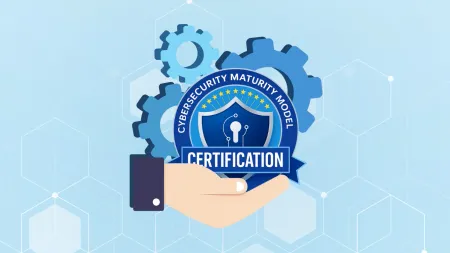How to Develop a Successful Digital Transformation Strategy: Your Ultimate Guide
Master your digital transformation strategy with this ultimate guide. ✓ Discover key benefits, tips, and expert insights to drive success with Agile IT.

How to Develop a Successful Digital Transformation Strategy: Your Practical Guide
The rate at which businesses need to adapt to new demands is rapidly increasing. Customer expectations shift, technologies evolve, and competitors innovate relentlessly.
To thrive, companies need to rethink traditional IT and implement a digital transformation strategy. This approach harnesses technology to reshape organizations from the ground up—by setting clear goals, assessing current capabilities, creating a fertile digital ground, executing with agility, and continuously monitoring progress
In this guide, you’ll learn what is digital transformation strategy, why it’s crucial for your business’s success, and which key benefits it offers. Plus, you’ll get practical tips on how to develop a successful digital strategy and transformation.
What is a Digital Transformation Strategy?
A digital transformation strategy is a detailed plan that aligns modern computer-based technologies like cloud computing, AI, and data analytics with a company’s goals to improve business performance.
Such a strategy goes beyond integrating new technologies. It plans to rewire the way a business operates, innovate, and provide value. McKinsey highlights that the goal of digital transformation should be to gain a competitive edge by continuously deploying tech at scale to delight customers and cut costs.
A successful strategy for digital transformation hinges on these key, interconnected components:
- Technology Integration: Adopt modern technologies like cloud computing, AI, data analytics, and automation tools.
- Cultural Shift: Embrace a culture of continuous innovation, collaboration, and employee training to adapt to new technologies.
- Process Redesign Scrutinize and re-engineer processes to identify inefficiencies and opportunities for better customer experiences and cost savings.
- Data-Driven Decision Making: Leverage advanced analytics to make strategic choices, boost productivity, personalize experiences, and predict future trends.
Is it a high priority? Absolutely! Digital transformation is now critical for organizational survival.

The global business landscape strongly supports this claim. Consumers are increasingly digitally enabled and demand seamless personalized experiences across all touchpoints.
Meanwhile, startups are constantly innovating entirely new tech-driven business models. Forbes highlights that lagging companies risk being disrupted by these new players. Remember Kodak? It missed the digital shift and ultimately had to file for bankruptcy.
Benefits of Digital Transformation and Strategy
A digital business transformation strategy promises a golden ticket to success: efficiency, happier customers, a dominant market position, and more.
Increase Operational Efficiency
Digital transformation means working smarter and saving more. For instance, automation eliminates repetitive tasks, reduces manual labor, frees up your team for higher-value activities, and ultimately lowers operational costs.
Cloud-based solutions enable fluid team collaboration, data access, and knowledge sharing, regardless of location. What’s more, using data analytics can let you gain insight into your business processes, help you spot bottlenecks, and suggest ways to improve them.
Enhance Customer Experience
Today, consumers are more digitally enabled and connected to businesses than ever before. In turn, they expect unique experiences and are less tolerant of bad ones.
With technologies like AI-driven chatbots and customer service, you can offer quick, personalized answers to inquiries. AI-infused analytics, CRM systems, and omnichannel platforms enable you to gain a 360-degree view of your customer by tracking data, patterns, and preferences, across all channels.
Additionally, implementing customer feedback systems can alert you to bad experiences in real time. This allows you to address customer pain points quickly before they drain your consumer base.
Foster Innovation
Digital collaboration tools like Slack or Microsoft Teams can smash barriers and foster open communication across teams and with partners. This cross-pollination of perspectives should encourage employees to explore new ways of working. A Deloitte report found that collaborative decision-making can boost innovation by 50%.
AI tools like Copilot can further help you build a strong culture that values innovation. For instance, they can shift employees’ focus from routine tasks to more creative work.
Increase Agility and Adaptability
Developing a digital strategy transformation allows companies to become more agile by leveraging advanced technology for flexible business operations. For instance, adopting a cloud-centric architecture enables businesses to scale resources dynamically, responding swiftly to changes in demand.
One case in point is Netflix, which utilizes a cloud-based infrastructure to handle traffic spikes during new releases, ensuring a seamless viewer experience. Similarly, real-time analytics platforms empower businesses to extract actionable insights quickly, even in times of uncertainty. In the retail sector, big players leveraged robust e-commerce platforms and data insights to meet the surge in online shopping during the pandemic.
A study in the Journal of Computer Information Systems found that companies with strong digital capabilities pivot more effectively during market disruptions. This agility also fosters a culture that embraces unpredictability and adapts swiftly to market trends.
Create a Data-Driven Culture
A future-proof IT transformation strategy prioritizes analytics to gain insight into a company’s current state, decode competitor dynamics, and offer a glimpse of the future.
By digitizing your products, customers, employees, and operations you can generate vast amounts of data. Leveraging well-integrated data analytics platforms can help you discover anomalies and patterns, track KPIs, and foresee market shifts. This empowers you to shift from making decisions based on intuition, habit, or experience to clear quantifiable metrics.
Harvard Business Review shows that companies embracing correct data-driven transformations see remarkable results: a 62% surge in customer satisfaction, a 54% growth in revenue and profits, and a 44% faster time to market compared to their data-shy counterparts.
Strengthen Cybersecurity
Effective digital transformation strategies go hand in hand with strong cybersecurity measures. Migrating to the cloud, like with Microsoft Azure, automatically provides you with cutting-edge, pre-built security measures to keep your infrastructure secure against cyberattacks and data breaches. This includes data encryption, multi-factor authentication, and regular security updates. Cloud providers also simplify handling backups and disaster recovery, implementing zero-trust protocols, and more.
Cybersecurity solutions are becoming more AI-powered and can be automated. For instance, Microsoft Defender can intelligently scan for vulnerabilities and respond to potential threats in real time. Similarly, Microsoft 365 can use AI to detect potentially rogue employee behavior and prevent data leaks. This ensures constant vigilance with minimal human intervention.
A well-planned strategy ensures regulatory compliance, reducing legal risks and protecting your company’s reputation. Features such as audit logging are essential for secure and compliant IT infrastructure. It captures detailed system and user activity records, helping you identify security threats and maintain system integrity.
Practical Tips for an Effective Digital Transformation Journey
- Define your vision and goals: Before starting, identify your transformation goals—what are you changing and why?
- Start small: Don’t try to do everything at once. Pilot a project in one department to test, learn, and refine before scaling up.
- Welcome a culture of change: Shift from traditional thinking—foster open communication, employee participation, and continuous learning.
- Focus on the right technology: Select technology based on your specific needs and ensure it can scale with your business.
- Seek guidance: Consider working with an IT solutions company to develop a well-structured strategy, get much-needed support, and ensure a successful transformation.
- Track and adapt When starting, establish KPIs, monitor progress, and be ready to adjust strategies as needed.
- Put your people first: Upskill your employees to ensure they can adapt to new technologies and processes.
All-in-One IT Strategy from Agile IT
Developing a digital transformation strategy is exciting, but it’s also challenging. To meet the requirements of digitalization and remain at the cutting edge of technology, you need Agile IT.
You can rely on us as your one-stop shop throughout your digital transformation journey. With our expertise and proven knowledge, we know what works and what doesn’t when it comes to digitally transforming businesses.
Contact our expert digital transformation strategists today and see how we can help you develop a winning strategy for your business.





